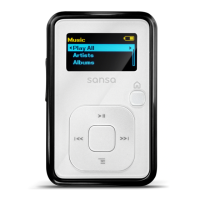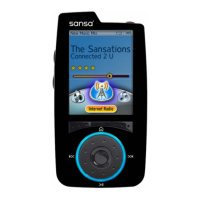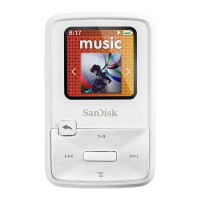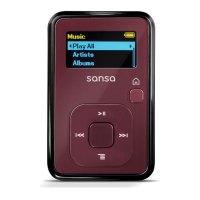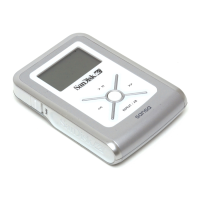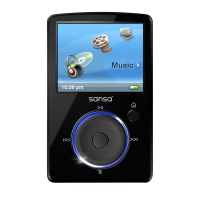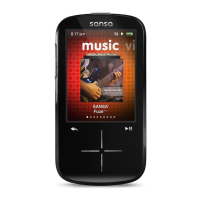HEARING LEVELS
To help you understand what may be considered a safe hearing level, the following
examples are included for your reference.
Examples of Typical Approximate Sound level:
• Sound Levels in Decibels (dB)*
• Refrigerator humming 40
• Normal conversation 60
• City traffic 80
• Motorcycles and lawnmowers 90#
• Rock concerts 110-120#
• Firearms 120-140#
* A decibel (dB) is a unit of relative measurement of the strength of sound wave.
In decibels (dB), a measured signal level doubles with every additional 3 dB.
# These sound decibel levels are considered harmful under extended exposure.
Information courtesy of the National Institute of Deafness & Other Communication
Disorders (NIDCD) http://www.nidcd.nih.gov/health/hearing/noise.asp
FOR YOUR SAFETY!
Your hearing may adapt to higher volumes of sound. In order to prevent any
harmful impact to your hearing, you must control the sound emanating from your
headphones and set the media player volume to a low setting where you can hear
it clearly and comfortably.
Studies, including one from NIDCD indicate that sounds of less than 80 decibels,
even after long exposure, are unlikely to cause a hearing loss.
Listen to your media player at such a level that you can still hear conversation and
other people in your environment without shouting when you attempt to converse.
It can also be dangerous to play your music with headphones/earphones at high
volume while walking, or engaged in other activities. You should exercise extreme
caution and discontinue use in potentially hazardous situations.
Do not use headphones/earphones while driving, cycling, or operating any
motorized vehicle. This may create a traffic hazard and may be illegal in some
areas.
Disposal Instructions
Do not dispose of this device with unsorted waste. Improper disposal may be
harmful to the environment and human health. Please refer to your local waste
authority for information on return and collection systems in your area.
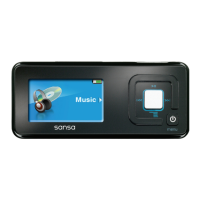
